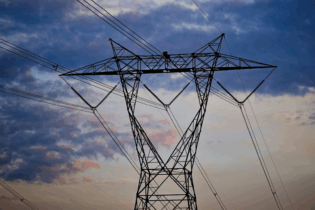The City of Joburg, in conjunction with EnerG and Pikitup, has identified the need for low-carbon city developments. The Joburg Landfill Gas-To-Energy Project is one of its success stories write Maryke Foulds.
Cities across South Africa are facing increasing amounts of greenhouse gases released by the burning of fossil fuels for energy, emissions from landfill sites.Trapped heat, which is a direct result of these, is causing gradual increases in temperature and resulting in more intense and frequent extreme weather events. As part of climate mitigation programmes around the City of Joburg, infrastructure planning and regulations are impacting on programmes such as integrated waste management. Landfill gas-to-energy projects capture methane for energy provision, and they have a direct bearing on greening the city and long-term alternative waste treatment technologies, which will divert waste from landfill sites. The current situation COJ currently has six landfill sites, four which are in operation. As part of the requirements for waste licenses, periodic monitoring of air quality has concluded that there are high concentrations of landfill gas in the surrounding areas. The projects, initiated in 2007, were awarded to EnerG Systems Joburg and will run over 20 years at no cost to COJ. During the feasibility study, it was found that five of the six sites have enough gas to generate electricity. These are Robinson Deep, Marie Louise, Goudkoppies, Linbro Park and Ennerdale. The renewable energy generated from the project will be fed to the municipal grid, offsetting a possible 19 MW of electricity. This can power approximately 12 500 middle-income households and will be the largest project to date in South Africa upon completion. The project The project focuses on a combination of vertical gas wells and horizontal gas collectors, which are installed in the waste mass. A network of piping connects the wells to the gas carrier main, which is connected to a two-stage blower, which places a vacuum on the waste. Gas is then pulled from the waste into the gas management compound and delivered to the flare where the gas is combusted, earning carbon credits.Currently, methane is 21 times more harmful in its effect on global warming than carbon dioxide. Methane is however converted to carbon dioxide through the combustion process. Eventually, electricity generators will be installed to supply gas as fuel to generate electricity, which will be connected into the local electricity distribution grid.
Progress to date Licenses were received in 2010 after the environmental impact assessments were done. Construction at Robinson Deep was completed and commissioned in 2013, with 64 gas wells installed. Construction at Marie Louise was completed and commissioned in April 2012. Development on the remaining sites will commence in July 2014. To date, the Robinson Deep site has produced 144 862 VERs and burn 19.375.570 Nm3 of landfill gas. A total of 21.263 VERs were produced and 3.522.664 Nm3 of landfill gas destructed at the Marie Louise site. Some of the benefits include the following:- an alternative disposal of problem gas while simultaneously harnessing it as an energy source
- carbon credits for the reduction of methane releases or special renewable energy tariffs
- participation in the REIPP process
- improved landfill space
- less complaints on odours from surrounding landowners
- compliance with environmental legislation and compliance with the City GDS 2040 (shift to low carbon economy).
- the continued uncertainty regarding continuity on the future of Kyoto and the role of CDM post 2012
- perceptions that the CDM is too much effort for too little reward
- cumbersome processes and a drop in carbon prices
- the exclusion of CERs in the European Union-Emission Trading Scheme from developing countries for projects registered after 2012
- using proven methodologies that are not necessarily applicable in South Africa.
- the waste licence was only obtained after two years
- the lack of political support in implementing the project.








